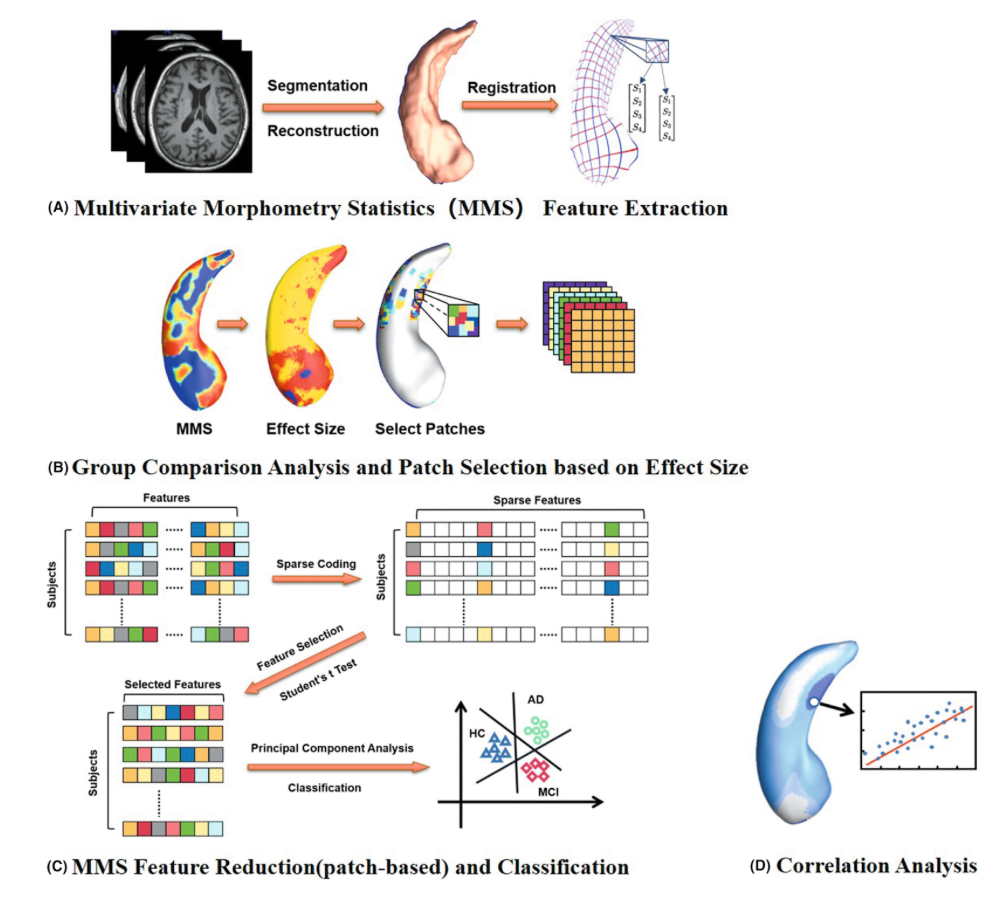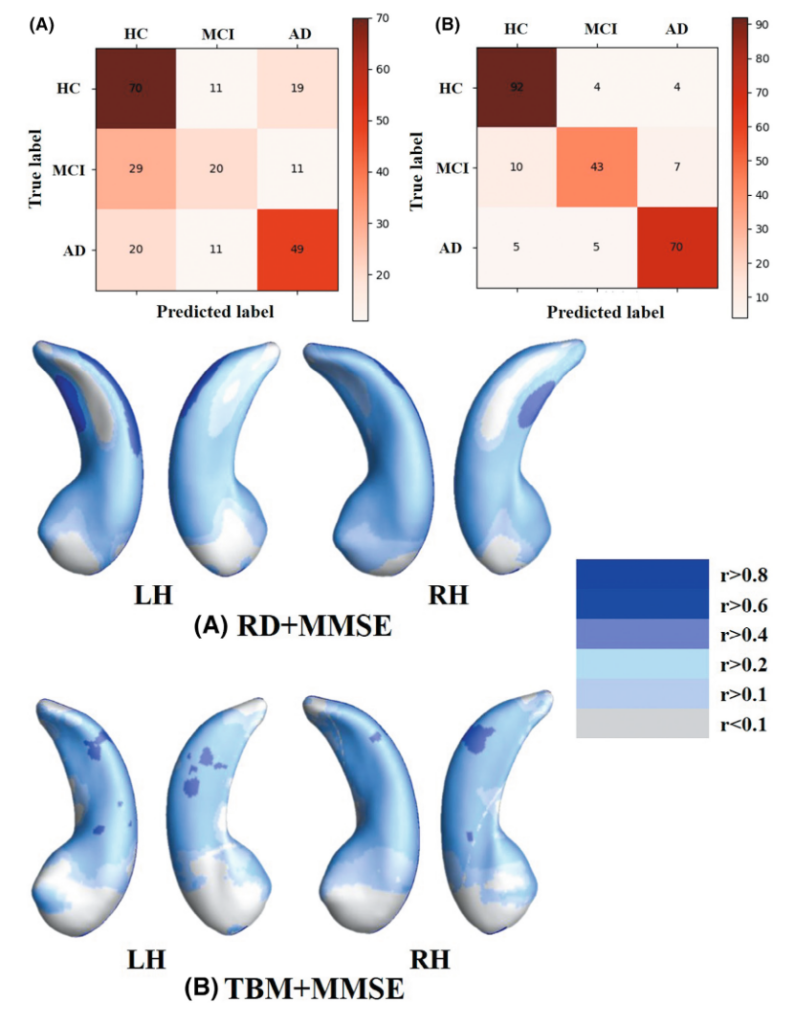Classification of Alzheimer’s disease based on hippocampal multivariate morphometry statistics
Weimin Zheng, Honghong Liu, Zhigang Li, Kuncheng Li, Yalin Wang, Bin Hu, Qunxi Dong, Zhiqun Wang
Abstract
Background: Alzheimer’s disease (AD) is a neurodegenerative disease characterized by progressive cognitive decline, and mild cognitive impairment (MCI) is associated with a high risk of developing AD. Hippocampal morphometry analysis is believed to be the
most robust magnetic resonance imaging (MRI) markers for AD and MCI. Multivariate morphometry statistics (MMS), a quantitative method of surface deformations analysis, is confirmed to have strong statistical power for evaluating hippocampus.
Aim: We aimed to test whether surface deformation features in hippocampus can be employed for early classification of AD, MCI, and healthy controls (HC).
Methods: We first explored the differences in hippocampus surface deformation among these three groups by using MMS analysis. Additionally, the hippocampal MMS features of selective patches and support vector machine (SVM) were used for the binary classification and triple classification.
Results: By the results, we identified significant hippocampal deformation among the three groups, especially in hippocampal CA1. In addition, the binary classification of AD/HC, MCI/HC, AD/MCI showed good performances, and area under curve (AUC) of triple-classification model achieved 0.85. Finally, positive correlations were found between the hippocampus MMS features and cognitive performances.
Conclusion: The study revealed significant hippocampal deformation among AD, MCI, and HC. Additionally, we confirmed that hippocampal MMS can be used as a sensitive imaging biomarker for the early diagnosis of AD at the individual level.



